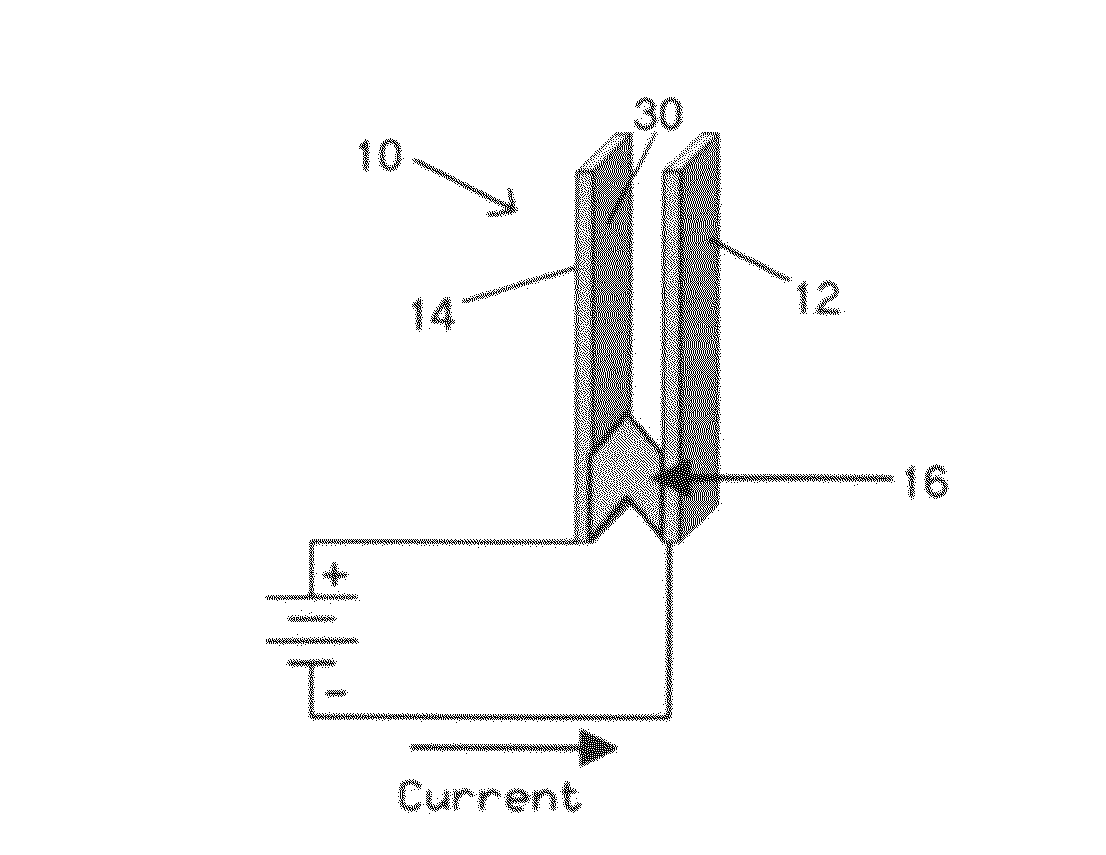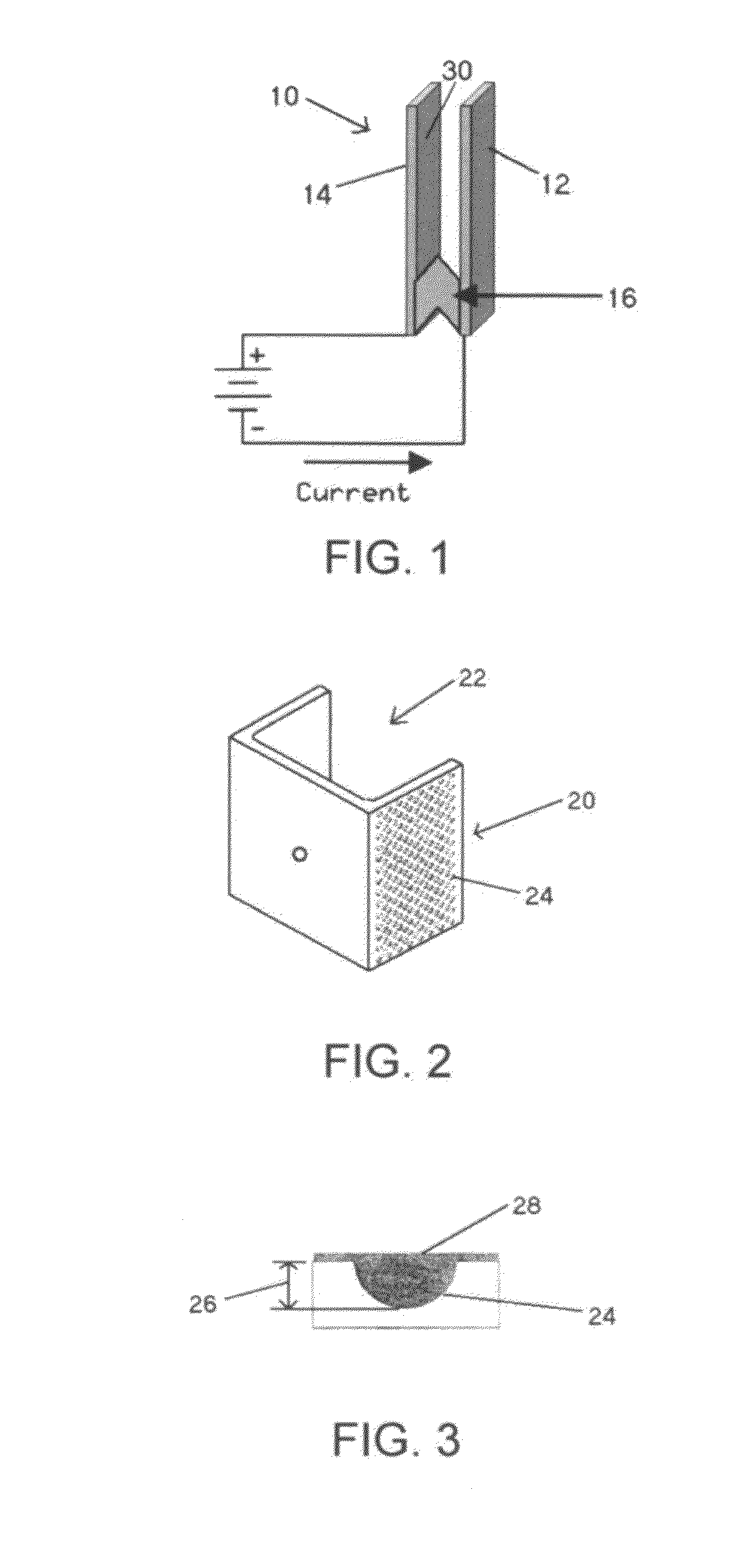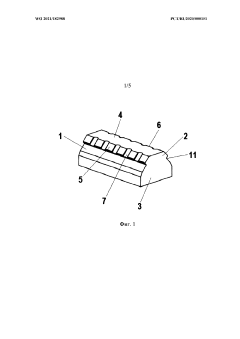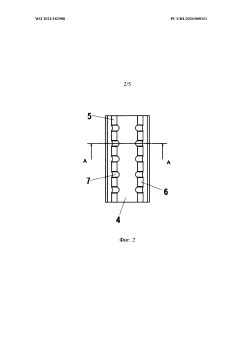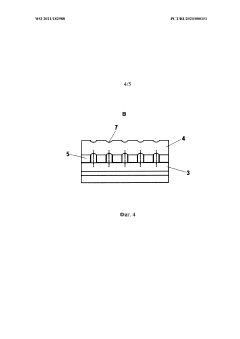Non-lethal Applications of Rail Gun Technology
AUG 6, 20258 MIN READ
Generate Your Research Report Instantly with AI Agent
Patsnap Eureka helps you evaluate technical feasibility & market potential.
Rail Gun Tech Evolution
Rail gun technology has undergone significant evolution since its inception in the early 20th century. Initially conceived as a theoretical concept, rail guns have progressed from laboratory experiments to practical demonstrations and are now on the cusp of real-world applications.
The early stages of rail gun development focused on understanding the fundamental principles of electromagnetic propulsion. In the 1940s and 1950s, researchers began exploring the potential of electromagnetic acceleration for projectile launch. These early experiments laid the groundwork for future advancements but were limited by the available power sources and materials.
The 1970s and 1980s saw a resurgence of interest in rail gun technology, driven by advancements in power electronics and materials science. During this period, researchers made significant progress in developing more efficient power supplies and stronger rail materials capable of withstanding the extreme forces involved in rail gun operation.
In the 1990s and early 2000s, rail gun technology entered a phase of rapid advancement. Military research programs, particularly in the United States, invested heavily in developing practical rail gun systems. This period saw the first successful demonstrations of rail guns capable of launching projectiles at velocities exceeding Mach 7.
The past decade has witnessed a shift in focus towards miniaturization and efficiency improvements. Researchers have been working on reducing the size and power requirements of rail gun systems, making them more suitable for a wider range of applications. This has opened up new possibilities for non-lethal applications of rail gun technology.
Recent developments have focused on addressing key challenges such as rail erosion, projectile design, and power management. Innovations in materials science have led to the development of more durable rail materials and advanced projectile designs that can withstand the extreme acceleration forces.
Looking towards the future, the evolution of rail gun technology is likely to continue in several directions. One area of focus is the development of compact, portable rail gun systems for non-lethal applications such as law enforcement and crowd control. Another promising direction is the adaptation of rail gun technology for space launch applications, potentially revolutionizing satellite deployment and space exploration.
As rail gun technology continues to mature, we can expect to see increased integration with other advanced technologies such as artificial intelligence for targeting and control, advanced materials for improved performance, and novel power storage solutions to address the high energy requirements of rail gun systems.
The early stages of rail gun development focused on understanding the fundamental principles of electromagnetic propulsion. In the 1940s and 1950s, researchers began exploring the potential of electromagnetic acceleration for projectile launch. These early experiments laid the groundwork for future advancements but were limited by the available power sources and materials.
The 1970s and 1980s saw a resurgence of interest in rail gun technology, driven by advancements in power electronics and materials science. During this period, researchers made significant progress in developing more efficient power supplies and stronger rail materials capable of withstanding the extreme forces involved in rail gun operation.
In the 1990s and early 2000s, rail gun technology entered a phase of rapid advancement. Military research programs, particularly in the United States, invested heavily in developing practical rail gun systems. This period saw the first successful demonstrations of rail guns capable of launching projectiles at velocities exceeding Mach 7.
The past decade has witnessed a shift in focus towards miniaturization and efficiency improvements. Researchers have been working on reducing the size and power requirements of rail gun systems, making them more suitable for a wider range of applications. This has opened up new possibilities for non-lethal applications of rail gun technology.
Recent developments have focused on addressing key challenges such as rail erosion, projectile design, and power management. Innovations in materials science have led to the development of more durable rail materials and advanced projectile designs that can withstand the extreme acceleration forces.
Looking towards the future, the evolution of rail gun technology is likely to continue in several directions. One area of focus is the development of compact, portable rail gun systems for non-lethal applications such as law enforcement and crowd control. Another promising direction is the adaptation of rail gun technology for space launch applications, potentially revolutionizing satellite deployment and space exploration.
As rail gun technology continues to mature, we can expect to see increased integration with other advanced technologies such as artificial intelligence for targeting and control, advanced materials for improved performance, and novel power storage solutions to address the high energy requirements of rail gun systems.
Non-lethal Market Demand
The market demand for non-lethal applications of rail gun technology has been steadily growing in recent years, driven by the increasing need for effective crowd control and less-than-lethal force options in law enforcement, military, and private security sectors. This demand is primarily fueled by the global emphasis on reducing fatalities and severe injuries during civil unrest, riot control, and other high-tension scenarios.
In the law enforcement sector, there is a significant interest in developing non-lethal rail gun systems for crowd dispersal and individual incapacitation. These systems could potentially offer greater range, accuracy, and effectiveness compared to traditional non-lethal weapons such as rubber bullets, tear gas, or bean bag rounds. The ability to precisely deliver non-lethal projectiles at a distance could provide law enforcement agencies with a valuable tool for managing large-scale protests or riots while minimizing the risk of serious injuries.
The military sector also shows considerable demand for non-lethal rail gun applications, particularly in peacekeeping operations and urban warfare scenarios. The ability to neutralize threats without causing fatalities aligns with the increasing focus on minimizing civilian casualties and collateral damage in modern military engagements. Non-lethal rail gun systems could potentially be used for vehicle immobilization, area denial, or disabling electronic systems, offering commanders a wider range of options in complex operational environments.
Private security firms and critical infrastructure protection agencies have expressed interest in non-lethal rail gun technology for perimeter defense and asset protection. The long-range capabilities and potential for rapid-fire deployment make rail gun-based systems attractive for securing large facilities, borders, or high-value targets against unauthorized access or potential threats.
The market for non-lethal rail gun applications is also being driven by advancements in materials science and power storage technologies. These developments are making it increasingly feasible to create compact, portable rail gun systems that can be deployed in various scenarios, from personal defense to vehicle-mounted platforms.
However, the market demand is tempered by several factors, including regulatory concerns, ethical considerations, and the need for extensive testing and validation of these new technologies. There are ongoing debates about the classification of rail gun-based non-lethal weapons and their potential for misuse or unintended consequences.
Despite these challenges, industry analysts project significant growth potential for the non-lethal rail gun market over the next decade. This growth is expected to be particularly strong in regions with high security concerns and in countries investing heavily in modernizing their law enforcement and military capabilities.
In the law enforcement sector, there is a significant interest in developing non-lethal rail gun systems for crowd dispersal and individual incapacitation. These systems could potentially offer greater range, accuracy, and effectiveness compared to traditional non-lethal weapons such as rubber bullets, tear gas, or bean bag rounds. The ability to precisely deliver non-lethal projectiles at a distance could provide law enforcement agencies with a valuable tool for managing large-scale protests or riots while minimizing the risk of serious injuries.
The military sector also shows considerable demand for non-lethal rail gun applications, particularly in peacekeeping operations and urban warfare scenarios. The ability to neutralize threats without causing fatalities aligns with the increasing focus on minimizing civilian casualties and collateral damage in modern military engagements. Non-lethal rail gun systems could potentially be used for vehicle immobilization, area denial, or disabling electronic systems, offering commanders a wider range of options in complex operational environments.
Private security firms and critical infrastructure protection agencies have expressed interest in non-lethal rail gun technology for perimeter defense and asset protection. The long-range capabilities and potential for rapid-fire deployment make rail gun-based systems attractive for securing large facilities, borders, or high-value targets against unauthorized access or potential threats.
The market for non-lethal rail gun applications is also being driven by advancements in materials science and power storage technologies. These developments are making it increasingly feasible to create compact, portable rail gun systems that can be deployed in various scenarios, from personal defense to vehicle-mounted platforms.
However, the market demand is tempered by several factors, including regulatory concerns, ethical considerations, and the need for extensive testing and validation of these new technologies. There are ongoing debates about the classification of rail gun-based non-lethal weapons and their potential for misuse or unintended consequences.
Despite these challenges, industry analysts project significant growth potential for the non-lethal rail gun market over the next decade. This growth is expected to be particularly strong in regions with high security concerns and in countries investing heavily in modernizing their law enforcement and military capabilities.
Current Challenges
Rail gun technology, while primarily associated with military applications, faces several challenges in its adaptation for non-lethal uses. One of the primary obstacles is the management of excessive kinetic energy. Traditional rail guns generate projectile velocities far beyond what is necessary or safe for non-lethal applications, requiring significant modifications to reduce power output without compromising functionality.
The miniaturization of rail gun systems presents another significant hurdle. Current designs are typically large and cumbersome, making them impractical for civilian or law enforcement use. Developing compact, portable versions while maintaining effectiveness is a complex engineering challenge that requires innovative approaches to power supply, capacitor technology, and materials science.
Power consumption remains a critical issue in rail gun technology. The enormous electrical current required to generate the electromagnetic fields for projectile acceleration results in substantial energy demands. This challenge is particularly acute when considering mobile or field-deployable non-lethal applications, where access to high-capacity power sources may be limited.
Thermal management is another area of concern. The rapid discharge of electrical energy in rail guns produces intense heat, which can lead to material degradation and reduced operational lifespan. Developing effective cooling systems that are compatible with the compact design requirements of non-lethal applications is a significant engineering challenge.
The durability of rail gun components under repeated use is also a major consideration. The high-stress environment created by electromagnetic forces can cause rapid wear on rails and other critical parts. Enhancing the longevity of these components while maintaining performance is crucial for practical non-lethal applications.
Accuracy and precision in non-lethal contexts present unique challenges. While military rail guns are designed for long-range targeting, non-lethal applications often require more precise control over shorter distances. Achieving consistent and accurate projectile delivery at lower velocities and varying ranges demands sophisticated guidance and control systems.
Lastly, the development of suitable non-lethal projectiles compatible with rail gun technology is an ongoing challenge. These projectiles must be capable of delivering the intended effect (such as incapacitation or area denial) without causing lethal injuries, all while withstanding the unique launch conditions of a rail gun system.
The miniaturization of rail gun systems presents another significant hurdle. Current designs are typically large and cumbersome, making them impractical for civilian or law enforcement use. Developing compact, portable versions while maintaining effectiveness is a complex engineering challenge that requires innovative approaches to power supply, capacitor technology, and materials science.
Power consumption remains a critical issue in rail gun technology. The enormous electrical current required to generate the electromagnetic fields for projectile acceleration results in substantial energy demands. This challenge is particularly acute when considering mobile or field-deployable non-lethal applications, where access to high-capacity power sources may be limited.
Thermal management is another area of concern. The rapid discharge of electrical energy in rail guns produces intense heat, which can lead to material degradation and reduced operational lifespan. Developing effective cooling systems that are compatible with the compact design requirements of non-lethal applications is a significant engineering challenge.
The durability of rail gun components under repeated use is also a major consideration. The high-stress environment created by electromagnetic forces can cause rapid wear on rails and other critical parts. Enhancing the longevity of these components while maintaining performance is crucial for practical non-lethal applications.
Accuracy and precision in non-lethal contexts present unique challenges. While military rail guns are designed for long-range targeting, non-lethal applications often require more precise control over shorter distances. Achieving consistent and accurate projectile delivery at lower velocities and varying ranges demands sophisticated guidance and control systems.
Lastly, the development of suitable non-lethal projectiles compatible with rail gun technology is an ongoing challenge. These projectiles must be capable of delivering the intended effect (such as incapacitation or area denial) without causing lethal injuries, all while withstanding the unique launch conditions of a rail gun system.
Non-lethal Solutions
01 Electromagnetic launch systems
Rail gun technology utilizes electromagnetic forces to launch projectiles at high velocities. These systems typically consist of parallel conducting rails and a sliding armature. When a large electric current is passed through the system, it creates a powerful magnetic field that accelerates the projectile along the rails.- Electromagnetic launch systems: Rail gun technology utilizes electromagnetic forces to accelerate projectiles to high velocities. These systems typically consist of parallel conducting rails and a sliding armature. The electromagnetic force generated by the current flowing through the rails propels the projectile, achieving higher muzzle velocities than conventional firearms.
- Power supply and energy storage: Efficient power supply and energy storage systems are crucial for rail gun technology. These systems often involve high-capacity capacitors or pulse-forming networks to deliver the intense electrical current required for launching projectiles. Advanced power management techniques are employed to optimize energy transfer and minimize losses during the firing process.
- Projectile design and materials: Specialized projectile designs are developed for rail gun systems to withstand the extreme forces and temperatures experienced during launch. These projectiles often incorporate advanced materials and aerodynamic profiles to maintain stability and accuracy over extended ranges. Considerations include minimizing plasma formation and reducing rail erosion during firing.
- Rail and armature configurations: Various rail and armature configurations are explored to enhance rail gun performance and durability. This includes research into novel rail geometries, multi-stage acceleration systems, and advanced materials for rail construction. Innovations in armature design focus on improving current distribution and reducing wear on the rails during launch.
- Control systems and fire control: Advanced control systems are developed to manage the complex operations of rail guns. These systems integrate power management, projectile loading, targeting, and firing sequences. Fire control systems incorporate sophisticated algorithms to account for factors such as projectile velocity, atmospheric conditions, and target movement, ensuring accurate engagement at extreme ranges.
02 Power supply and energy storage
Efficient power supply and energy storage systems are crucial for rail gun technology. These systems often involve high-capacity capacitors, pulse-forming networks, or other advanced energy storage devices capable of delivering large amounts of electrical energy in a short time to power the electromagnetic launch.Expand Specific Solutions03 Projectile design and materials
Specialized projectile designs and materials are essential for rail gun technology. These projectiles must withstand extreme acceleration forces and maintain stability during flight. Advanced materials and aerodynamic shapes are used to optimize performance and reduce wear on the rail system.Expand Specific Solutions04 Rail and armature materials
The choice of materials for rails and armatures is critical in rail gun technology. These components must withstand high temperatures, pressures, and electromagnetic forces. Research focuses on developing materials with high conductivity, durability, and resistance to wear and erosion.Expand Specific Solutions05 Control and guidance systems
Advanced control and guidance systems are integrated into rail gun technology to improve accuracy and performance. These systems may include sophisticated electronics, sensors, and software for trajectory calculation, timing control, and projectile guidance during and after launch.Expand Specific Solutions
Key Industry Players
The non-lethal applications of rail gun technology are in an early development stage, with a growing market potential as defense and law enforcement agencies seek less-lethal options. The technology's maturity is still evolving, with key players like Lawrence Livermore National Security, SureFire LLC, and VirTra, Inc. leading research and development efforts. These companies are exploring applications in crowd control, training simulations, and non-lethal projectile systems. While the market size remains relatively small, increasing demand for advanced non-lethal weapons is driving innovation and investment in this niche sector. The technology's complexity and high development costs currently limit widespread adoption, but ongoing advancements may lead to more practical and cost-effective solutions in the near future.
206th Research Institute
Technical Solution: The 206th Research Institute has focused on developing rail gun technology for non-lethal crowd control and riot management applications. Their research has resulted in a mobile rail gun platform capable of rapidly deploying various non-lethal projectiles, including rubber bullets, bean bags, and chemical irritant canisters[9]. The institute's design emphasizes scalability and modularity, allowing for easy integration into existing law enforcement and military vehicles. The system utilizes advanced targeting and fire control systems to ensure accuracy and minimize the risk of unintended injuries. Additionally, the 206th Research Institute has developed specialized low-velocity projectiles that maximize stopping power while minimizing the potential for lethal injuries, even at close ranges[10]. This technology represents a significant advancement in non-lethal crowd control capabilities, offering law enforcement agencies a more effective and potentially safer alternative to traditional riot control methods.
Strengths: Mobile platform integration, versatile projectile options, advanced targeting systems. Weaknesses: Potential for misuse in suppressing civil unrest, high development and production costs, requires specialized training for operators.
Mitsubishi Electric Corp.
Technical Solution: Mitsubishi Electric Corp. has applied its expertise in electromagnetic systems to develop rail gun technology for non-lethal industrial applications. Their focus has been on creating high-speed material handling and sorting systems for manufacturing and logistics sectors. Mitsubishi's rail gun-based conveyor system uses electromagnetic propulsion to accelerate and precisely control the movement of packages and materials within warehouses and production facilities[11]. This technology allows for rapid, contactless transportation of items, reducing wear and tear on traditional conveyor systems and increasing overall efficiency. The company has also developed a rail gun-inspired electromagnetic braking system for high-speed trains, utilizing the principles of electromagnetic propulsion in reverse to provide rapid, wear-free deceleration[12]. These applications demonstrate the potential for rail gun technology to revolutionize non-military industries by offering high-speed, low-maintenance alternatives to conventional mechanical systems.
Strengths: Increased efficiency in material handling, reduced mechanical wear, potential for energy recovery in braking systems. Weaknesses: High initial implementation costs, requires specialized maintenance, potential electromagnetic interference with other systems.
Core Innovations
Nontoxic low melting point fusible alloy lubrication of electromagnetic railgun armatures and rails
PatentActiveUS20130333678A1
Innovation
- A ternary alloy of bismuth, indium, and tin is used as a lubricant, applied via surface patterns on the rails and armature, reducing friction and electrical resistance by forming a low-temperature, renewable boundary lubricant film.
Gun rail
PatentWO2021182988A1
Innovation
- A compact strap with a T-shaped base featuring cylindrical slots on inclined side faces, reducing height and weight, avoiding right-angle grooves that catch on fabrics, and allowing wider lower parts for internal mechanisms and equipment mounting.
Safety Regulations
The development and deployment of non-lethal rail gun technology necessitate comprehensive safety regulations to ensure responsible use and minimize potential risks. These regulations encompass various aspects, including design standards, operational protocols, and user training requirements.
Safety standards for non-lethal rail gun systems focus on preventing unintended harm to operators, bystanders, and targets. Manufacturers must adhere to strict guidelines regarding projectile design, muzzle velocity limitations, and energy dissipation mechanisms. These standards aim to reduce the risk of severe injuries while maintaining the effectiveness of the non-lethal application.
Operational protocols play a crucial role in ensuring the safe use of rail gun technology in non-lethal scenarios. These protocols outline proper handling procedures, maintenance requirements, and storage guidelines. Additionally, they establish clear rules of engagement, defining appropriate situations for deployment and specifying target zones to minimize the risk of unintended harm.
User training is a fundamental component of safety regulations for non-lethal rail gun applications. Operators must undergo rigorous training programs that cover equipment operation, safety procedures, and situational awareness. These programs emphasize the importance of proper target identification and assessment of environmental factors to prevent collateral damage.
Environmental considerations are also addressed in safety regulations for non-lethal rail gun technology. Guidelines may include restrictions on use in certain weather conditions or near sensitive infrastructure. Additionally, regulations may require the implementation of safeguards to prevent electromagnetic interference with nearby electronic systems.
Monitoring and reporting mechanisms are essential elements of safety regulations. Users of non-lethal rail gun technology are typically required to maintain detailed records of deployments, including circumstances, outcomes, and any unintended effects. This data helps regulatory bodies assess the technology's safety profile and inform future improvements to safety standards.
International cooperation and harmonization of safety regulations are increasingly important as non-lethal rail gun technology becomes more widespread. Efforts to establish global standards and best practices aim to ensure consistent safety measures across different jurisdictions and prevent the misuse of this technology in cross-border scenarios.
As the technology evolves, safety regulations must adapt to address new challenges and capabilities. Regular reviews and updates to these regulations are necessary to keep pace with technological advancements and emerging safety concerns in the field of non-lethal rail gun applications.
Safety standards for non-lethal rail gun systems focus on preventing unintended harm to operators, bystanders, and targets. Manufacturers must adhere to strict guidelines regarding projectile design, muzzle velocity limitations, and energy dissipation mechanisms. These standards aim to reduce the risk of severe injuries while maintaining the effectiveness of the non-lethal application.
Operational protocols play a crucial role in ensuring the safe use of rail gun technology in non-lethal scenarios. These protocols outline proper handling procedures, maintenance requirements, and storage guidelines. Additionally, they establish clear rules of engagement, defining appropriate situations for deployment and specifying target zones to minimize the risk of unintended harm.
User training is a fundamental component of safety regulations for non-lethal rail gun applications. Operators must undergo rigorous training programs that cover equipment operation, safety procedures, and situational awareness. These programs emphasize the importance of proper target identification and assessment of environmental factors to prevent collateral damage.
Environmental considerations are also addressed in safety regulations for non-lethal rail gun technology. Guidelines may include restrictions on use in certain weather conditions or near sensitive infrastructure. Additionally, regulations may require the implementation of safeguards to prevent electromagnetic interference with nearby electronic systems.
Monitoring and reporting mechanisms are essential elements of safety regulations. Users of non-lethal rail gun technology are typically required to maintain detailed records of deployments, including circumstances, outcomes, and any unintended effects. This data helps regulatory bodies assess the technology's safety profile and inform future improvements to safety standards.
International cooperation and harmonization of safety regulations are increasingly important as non-lethal rail gun technology becomes more widespread. Efforts to establish global standards and best practices aim to ensure consistent safety measures across different jurisdictions and prevent the misuse of this technology in cross-border scenarios.
As the technology evolves, safety regulations must adapt to address new challenges and capabilities. Regular reviews and updates to these regulations are necessary to keep pace with technological advancements and emerging safety concerns in the field of non-lethal rail gun applications.
Ethical Considerations
The ethical considerations surrounding non-lethal applications of rail gun technology are complex and multifaceted. While the primary goal is to develop less lethal alternatives for law enforcement and military operations, the potential for misuse and unintended consequences must be carefully evaluated.
One of the key ethical concerns is the risk of injury or unintended fatalities. Although designed to be non-lethal, rail gun technology still involves high-velocity projectiles that can cause significant harm. The development and deployment of such weapons must prioritize minimizing the risk of severe injury or death, even in non-lethal applications.
Another important ethical consideration is the potential for escalation of force. The availability of advanced non-lethal weapons may lower the threshold for their use, potentially leading to an increase in confrontations or excessive use of force. This raises questions about the appropriate circumstances for deployment and the need for strict protocols and training.
The dual-use nature of rail gun technology also presents ethical challenges. While developed for non-lethal applications, the underlying technology could potentially be adapted for lethal purposes. This raises concerns about proliferation and the responsibility of researchers and manufacturers to prevent misuse.
Privacy and civil liberties are additional ethical considerations. Non-lethal rail gun applications may involve advanced targeting systems or surveillance technologies, which could infringe on individual privacy rights. Balancing security needs with civil liberties requires careful consideration and robust safeguards.
The potential for psychological impact on both operators and targets must also be addressed. The use of advanced non-lethal weapons may have unforeseen psychological effects, including trauma or long-term stress. Ethical guidelines should consider the mental health implications of deploying such technologies.
Transparency and accountability in the development and use of non-lethal rail gun applications are crucial ethical considerations. Clear guidelines, oversight mechanisms, and public disclosure of capabilities and limitations are necessary to maintain public trust and ensure responsible use.
Finally, the allocation of resources towards non-lethal weapons development raises ethical questions about priorities in research and development. Balancing investment in non-lethal technologies with other societal needs requires careful consideration of the broader implications and potential benefits to society.
One of the key ethical concerns is the risk of injury or unintended fatalities. Although designed to be non-lethal, rail gun technology still involves high-velocity projectiles that can cause significant harm. The development and deployment of such weapons must prioritize minimizing the risk of severe injury or death, even in non-lethal applications.
Another important ethical consideration is the potential for escalation of force. The availability of advanced non-lethal weapons may lower the threshold for their use, potentially leading to an increase in confrontations or excessive use of force. This raises questions about the appropriate circumstances for deployment and the need for strict protocols and training.
The dual-use nature of rail gun technology also presents ethical challenges. While developed for non-lethal applications, the underlying technology could potentially be adapted for lethal purposes. This raises concerns about proliferation and the responsibility of researchers and manufacturers to prevent misuse.
Privacy and civil liberties are additional ethical considerations. Non-lethal rail gun applications may involve advanced targeting systems or surveillance technologies, which could infringe on individual privacy rights. Balancing security needs with civil liberties requires careful consideration and robust safeguards.
The potential for psychological impact on both operators and targets must also be addressed. The use of advanced non-lethal weapons may have unforeseen psychological effects, including trauma or long-term stress. Ethical guidelines should consider the mental health implications of deploying such technologies.
Transparency and accountability in the development and use of non-lethal rail gun applications are crucial ethical considerations. Clear guidelines, oversight mechanisms, and public disclosure of capabilities and limitations are necessary to maintain public trust and ensure responsible use.
Finally, the allocation of resources towards non-lethal weapons development raises ethical questions about priorities in research and development. Balancing investment in non-lethal technologies with other societal needs requires careful consideration of the broader implications and potential benefits to society.
Unlock deeper insights with Patsnap Eureka Quick Research — get a full tech report to explore trends and direct your research. Try now!
Generate Your Research Report Instantly with AI Agent
Supercharge your innovation with Patsnap Eureka AI Agent Platform!
